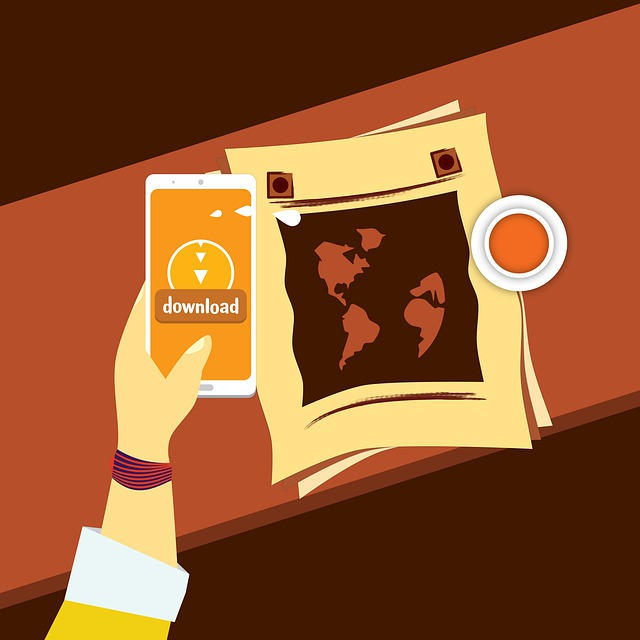We’ll increase conversions by
20-100+%
on your website.
Get a FREE Audit today
See how we can help your business increase conversion rates
Return On Ad Spend (ROAS) Calculator

What does ROAS mean?
ROAS, or Return on Advertising Spend, represents a marketing metric that serves as a valuable tool for assessing the effectiveness of an advertising campaign, through the calculation of revenue generated for each dollar spent on advertising. It represents a ratio, a quintessential indicator of how much revenue is generated for every dollar expended on advertising.
ROAS represents a highly favored metric for businesses to assess the efficiency of their advertising campaigns. They can identify the most profitable channels, scrutinize their advertising spend and optimize the same for maximum return on investment. Unlike ROI, which measures the overall profitability of an investment, the ROAS calculation specifically focuses on the revenue generated from advertising spend.
Let us explore the concept further. Assume a company allocates $100 for advertising and the ad spending garners $500 in revenue. In this scenario, the ROAS would equal 5:1 ($500/$100). This implies that for every dollar spent on advertising, the company is generating $5 in revenue. A higher ROAS indicates that the advertising campaign is more effective, as it is generating more revenue per dollar spent.
Businesses that rely on digital marketing to drive revenue and growth consider ROAS a crucial metric. By tracking ROAS, businesses can identify the most effective advertising channels, optimize their advertising strategies, and augment their revenue and profitability. Therefore, ROAS represents a powerful tool for businesses to enhance their digital marketing efforts, on their own or with a digital marketing service or agency, enabling them to achieve greater revenue and profitability.
Why ROAS is important in digital marketing?

ROAS, a crucial gauge in digital marketing, enables enterprises to measure the triumph of their advertising endeavors and optimize their advertising outlay to amplify their return on investment. But what makes ROAS so vital? Well, let’s scrutinize a few explanations:
Assessment of campaign success: Employing ROAS, businesses can gauge the effectiveness of their advertising campaigns by evaluating the revenue produced from each advertising channel. By closely monitoring ROAS, businesses can recognize which channels are yielding the highest return on investment and adjust their strategies accordingly.
Optimization of advertising expenses: ROAS helps businesses optimize their advertising expenses by pinpointing the most efficacious channels and then adjusting their budgetary allocations appropriately. By increasing their investments in high-performing channels, businesses can maximize their return on investment and curtail squandered expenses on unproductive channels.
Recognition of lucrative campaigns: Thanks to ROAS, businesses can recognize their most lucrative campaigns by assessing the revenue produced by each one. By analyzing the performance of different campaigns, businesses can ascertain which campaigns are producing the highest return on investment and then adjust their strategies accordingly.
In conclusion, ROAS is an essential gauge for businesses reliant on digital marketing to propel revenue and expansion. By closely monitoring and optimizing ROAS, businesses can maximize their return on investment, augment their revenue and profitability, and attain their marketing objectives.
What does ROAS stand for?

A. Explanation of the acronym
ROAS, short for Return on Advertising Expenditure, is a pivotal metric within the marketing domain. It aims to quantify the revenue produced by multiple campaigns for every dollar expended on advertising, which is evaluated by dividing the revenue derived from an advertising campaign by the cost of the campaign. The resultant ratio provides insight into the amount of revenue that was generated for each dollar spent on advertising.
For instance, consider a scenario where a company invests $100 on advertising and then garners $500 in revenue. In this instance, the ROAS would be 5:1 ($500/$100), signifying that each dollar spent on advertising generates $5 in revenue.
ROAS holds significant importance within the realm of digital marketing, owing to its ability to measure the effectiveness of advertising campaigns and optimize advertising expenditure to yield a better return on investment. By monitoring and optimizing ROAS, businesses can identify the most productive advertising channels, refine their strategies, and successfully achieve their marketing objectives.
B. Calculation of ROAS

The calculation of ROAS may appear to be a simple process on the surface, but it involves diving into the intricate details of an advertising campaign. The formula to compute ROAS is as follows:
ROAS = Revenue generated from advertising / Cost of advertising
To better illustrate, suppose a company invested $1,000 in advertising, which led to generating sales of $5,000 in revenue. The ROAS can then be computed using the above formula:
ROAS = $5,000 / $1,000
ROAS = 5:1
This means that for every dollar expended on advertising, the company reaps $5 in revenue. The ratio generated can either be expressed as a numerical value or a ratio like 5:1, which indicates that every dollar spent on advertising generates $5 in revenue.
ROAS is a critical metric for businesses that place their trust in digital marketing to drive their revenue and expansion. By monitoring and optimizing ROAS, businesses can successfully maximize their return on investment, reduce their wasteful expenditure on ineffective channels, and bolster their revenue and profitability to achieve their marketing goals.
C. Differences between ROAS and ROI
ROAS (Return on Advertising Spend) and ROI (Return on Investment) are two vital metrics in the marketing world, but their roles differ significantly. Here are some of the primary distinctions between ROAS and ROI:
What they measure: ROAS quantifies the revenue produced from advertising expenses, while ROI assesses the overall profitability of an investment. ROI factors in all costs linked with investment, such as production expenses, overhead costs, and marketing expenditures, while ROAS focuses solely on revenue earned from advertising spending.
Marketing emphasis: ROAS is a marketing-specific metric that centers on the revenue gained from advertising expenses, while ROI is a more general metric that can assess the profitability of any investment.
Timing: ROAS measures the effectiveness of a particular advertising campaign over a specific time frame, while ROI measures the profitability of an investment throughout its entire life cycle.
Calculation: ROAS is calculated by dividing the revenue generated from advertising by the cost of the campaign, while ROI is calculated by subtracting the total cost of an investment from the total revenue generated and dividing the result by the total cost.
Overall, both ROAS and ROI are critical metrics that businesses can use to evaluate their performance and optimize their strategies. While ROAS is a more specific metric that targets the effectiveness of advertising campaigns, ROI is a more general metric that can evaluate the profitability of any investment.
Importance of ROAS

A. Measurement of ad campaign success
ROAS (Return on Advertising Spend) is an indispensable metric for businesses to evaluate their advertising campaigns’ triumph. By measuring the revenue generated for every dollar invested in advertising, businesses can deduce the campaign’s efficacy and optimize their advertising spend to maximize their return on investment (ROI). Here are some strategies that businesses can use to measure their campaigns’ success using ROAS:
Scrutinize campaign-specific metrics: Businesses can scrutinize campaign-specific metrics such as click-through rates, conversion rates, and revenue generated to measure the triumph of a specific advertising campaign. By comparing these metrics with the cost of the campaign, businesses can compute the ROAS and determine the campaign’s efficacy.
Compare performance across various channels: Businesses can use ROAS to compare the performance of different advertising channels such as social media, search engine marketing, and display advertising. By measuring the ROAS for each channel, businesses can pinpoint the most effective channels and allocate their advertising marketing spend, accordingly.
Establish benchmarks and objectives: To evaluate the triumph of their advertising campaigns, businesses can set benchmarks and objectives for their ROAS. By establishing a target ROAS for each campaign or advertising channel, businesses can measure their performance against their objectives and identify areas for improvement.
Overall, evaluating the success of advertising campaigns is crucial for businesses that depend on digital marketing to generate revenue and spur growth. By using ROAS to measure their campaigns’ effectiveness, businesses can optimize their advertising spend, boost their return on investment, and accomplish their marketing objectives.
B. Optimization of advertising spend

Maximizing return on advertising spend (ROAS) is a critical facet of digital marketing. Businesses must ensure they generate the most revenue from their advertising efforts. Below are some strategies that businesses can use to optimize their advertising spend:
Identify lucrative channels: Measuring the ROAS for each advertising channel helps identify channels generating more revenue. Allocating more advertising spend to those channels maximizes ROI and revenue.
Test and refine ad creative: Businesses can enhance the performance of their advertising campaigns and increase their ROAS by testing and refining ad creative. Testing different ad formats, messaging, and visuals helps determine the best performing creative and optimizes advertising spend.
Optimize targeting: Refining audience targeting based on demographics, interests, and behaviors ensures ads are seen by the audience most likely to convert. This helps businesses reach the right audience with their advertising campaigns and increase their ROAS.
Monitor and adjust bidding strategies: Bidding strategies significantly impact the performance of advertising campaigns. Monitoring and adjusting them based on performance data helps optimize advertising spend and increase ROAS.
Overall, optimizing advertising spend is an ongoing process that necessitates constant monitoring, testing, and refinement. Implementing these strategies, tracking results, and making changes accordingly maximizes ROI and helps businesses achieve their marketing objectives.
C. Identification of profitable ad campaigns

In the expansive domain of digital marketing, the identification of profitable campaigns is a critical and indispensable pursuit. Businesses must possess the capability to accurately detect campaigns that generate the most revenue, enabling them to allocate their resources more judiciously and effectively optimize their marketing strategies. Below are some convoluted strategies that businesses can employ to identify profitable campaigns:
Measuring ROAS: The calculation of return on advertising spend (ROAS) is a paramount metric for the identification of profitable campaigns. By reckoning the revenue generated per dollar invested in advertising costs, businesses can disentangle campaigns that are generating the most revenue and more competently allot their advertising expenditure.
Tracking conversion rates: Maintaining watch over conversion rates is another pivotal metric for identifying profitable campaigns. By meticulously analyzing the number of conversions elicited by each campaign, businesses can decipher which campaigns are most efficient at driving conversions and prudently apportion their advertising spend.
Analyzing customer lifetime value (CLV): Scrutinizing customer lifetime value (CLV) can succor businesses in identifying profitable campaigns by scrutinizing the long-term revenue yielded by each customer. By scrutinizing the CLV of customers obtained through each campaign, businesses can determine which campaigns are generating the most revenue over time.
Conducting A/B testing: The conduction of A/B testing can expedite the identification of profitable campaigns by comparing the performance of diverse ad creative, landing pages, and other campaign elements. By conducting A/B tests and diligently analyzing the results, businesses can determine which campaign elements are most effective at generating revenue and optimize their campaigns accordingly.
In summation, the identification of profitable campaigns necessitates an incessant cycle of monitoring, testing, and refinement. By adopting and implementing these labyrinthine strategies and carefully scrutinizing the results, businesses can maximize their return on investment and efficaciously achieve their marketing objectives.
Factors that affect ROAS

A. Target audience
Target audience? More like the elusive unicorn that businesses must track down and capture with their marketing messages and advertising campaigns. The target audience can change as frequently as the weather and may vary depending on the product or service being offered, as well as the business’s goals and objectives.
To identify this ever-shifting target, businesses typically consider a plethora of demographic factors such as age, gender, income, education level, and geographic location. But they can’t stop there. Oh no, they must also consider psychographic factors such as lifestyle, interests, values, and attitudes. It’s a complex web of data that businesses must navigate to reach their intended audience.
But once the target audience has been identified, businesses can’t just sit back and relax. No way! They must tailor their marketing messages and advertising campaigns to appeal to that audience. This requires strategic thinking, selecting the most effective advertising channels, and creating ad creative that’s so compelling it’ll make even the most jaded consumer take notice. And don’t forget to target specific keywords or topics. It’s like trying to hit a moving target in a hurricane!
But the work doesn’t stop there. The target audience may shift at any moment, like sand in the wind. That’s why ongoing research and analysis of customer behavior and market trends is vital. Only by staying on top of the latest trends and understanding customer behavior can businesses refine and adjust their target audience as needed. It’s a never-ending journey, but for businesses that get it right, the rewards can be astronomical.
B. Advertising platform

Advertising platforms are digital platforms utilized by businesses to create, manage, and optimize their advertising campaigns, providing various tools and features for targeting audiences, generating ad creative, and assessing campaign effectiveness.
Numerous advertising platforms exist, each with distinctive strengths and weaknesses. Below are some popular advertising platforms:
Google Ads: A platform that allows businesses to create and showcase ads on Google’s search result pages and partner websites. Google Ads boasts various targeting options, such as demographics, geographic location, and keywords.
Facebook Ads: A platform that enables businesses to produce and display ads on Facebook and Instagram. Facebook Ads features targeting options such as interests, behaviors, and demographics.
LinkedIn Ads: A platform that empowers businesses to generate and present ads on LinkedIn. LinkedIn Ads offers targeting options such as industry, job title, and company size.
Twitter Ads: A platform that enables businesses to design and display ads on Twitter. Twitter Ads provides targeting options such as hashtags, keywords, and interests.
Choosing the most suitable advertising platform is reliant on the business’s objectives, target audience, and budget. By selecting the optimal ad platform and utilizing its features adeptly, businesses can heighten their advertising campaigns’ effectiveness and return on investment.
C. Campaign objectives
The objectives of an advertising initiative are the concrete aims and results that businesses seek to accomplish through their marketing and promotional activities. These objectives depend on the business’s overall aims and the particular merchandise or service being endorsed. Here are some typical objectives:
Enhancing brand recognition: Advertising initiatives aimed at enhancing brand recognition aim to increase the prominence and acknowledgment of a business or product. This may involve producing captivating ad creative and expanding the range and frequency of promotional messages.
Generating leads: Advertising initiatives aimed at lead generation aim to acquire contact information from potential clients and gradually cultivate them into paying customers. This may involve creating customized landing pages, implementing email campaigns, and deploying other marketing automation tools.
Increasing sales conversion: Advertising initiatives aimed at sales conversion aim to convert leads into paying customers by offering them compelling deals, discounts, or other incentives. This may involve creating highly-targeted ad creative, optimizing landing pages, and monitoring the conversion rate of the campaign.
Encouraging customer retention: Advertising initiatives aimed at customer retention aim to stimulate current clients to continue using a product or service. This may involve creating loyalty programs, offering exclusive promotions to current customers, and creating engaging content that keeps customers invested in the brand.
Overall, precisely defining advertising objectives is critical for developing effective marketing and advertising strategies. By setting precise, measurable, and attainable objectives, businesses can monitor the success of their campaigns and optimize their efforts for maximum ROI.
D. Industry benchmarks

Industry benchmarks are a curious set of standards and performance measures that businesses can adopt to evaluate the efficacy of their marketing and advertising initiatives against industry norms. By utilizing benchmarks as a reference point, businesses can determine how their campaigns are performing relative to their rivals and identify potential areas for improvement.
A plethora of typical industry benchmarks include:
Click-through rate (CTR): The percentage of individuals who click on an advertisement after perusing it. The usual CTR sways depending on the industry and advertising platform, but generally ranges from 0.5% to 2%.
Conversion rate: The proportion of people who undertake a desired action, like making a purchase or filling out a form, after clicking on an advertisement. The usual conversion rate differs by industry and campaign type, but typically ranges from 2% to 5%.
Cost per click (CPC): The sum businesses pay for each click on their advertisements. The average CPC varies depending on the industry and advertising platform, but usually falls between $1 to $2.
Return on ad spend (ROAS): The revenue generated for every dollar expended on advertising. The typical ROAS varies depending on industry and campaign type, but generally falls within the range of 2:1 to 5:1.
Cost per acquisition (CPA): The fee businesses pay for each new customer or lead generated via advertising. The typical CPA varies depending on the industry and campaign type, but usually ranges from $30 to $100.
By evaluating their performance against industry benchmarks, businesses can discern whether their campaigns are performing above or below average and modify their strategies accordingly. This can aid businesses in optimizing their advertising spending and maximizing their ROI.
Best practices for optimizing ROAS

A. Data-driven decision-making
Data-driven decision-making, a sophisticated and intricate process, alludes to the practice of making informed business choices based on data and analytics rather than intuition or gut feelings. In the current digital era, businesses can avail themselves of a plethora of data from diverse sources, such as social media, web analytics, customer behavior, and sales information.
Data-driven decision-making involves collecting, scrutinizing, and interpreting data to inform business decisions, such as devising marketing strategies, targeting specific audiences, optimizing advertising expenditure, and enhancing customer engagement. By utilizing data to guide decision-making, businesses can mitigate the risk of making choices based on assumptions or incomplete information and maximize the chances of achieving their desired outcomes.
The process of data-driven decision-making usually encompasses the following steps:
Determine business goals: Establish the business goals and objectives that the data analysis will enlighten.
Gather and analyze data: Accumulate pertinent data from various origins, such as web analytics, customer feedback, and sales information, and analyze it to recognize patterns and trends.
Deconstruct data: Utilize the insights derived from data analysis to inform business decisions and strategies.
Evaluate and refine: Execute modifications based on data insights and gauge the effectiveness of those adjustments over time.
Data-driven decision-making is indispensable for businesses to sustain their competitiveness in today’s fast-paced, data-driven marketplace. By capitalizing on data to inform business decisions, businesses can optimize their marketing and advertising strategies, gain better comprehension of their customers, and ultimately propel business growth and success.
B. Continuous testing and experimentation
The perpetual pursuit of progress through continuous testing and experimentation is an intricate and methodical process of refining and enhancing marketing and advertising campaigns. This entails a systematic and comprehensive approach to assessing and modifying various aspects of campaigns such as ad creative, targeting, messaging, and landing pages, in order to pinpoint the most efficacious methods.
The process of continuous testing and experimentation usually encompasses the following labyrinthine steps:
Construct hypotheses: Establish specific and intricate hypotheses regarding what could be enhanced in the campaign to increase performance.
Formulate experiments: Devise a meticulous plan for testing various elements of the campaign to determine if the hypothesis is correct.
Execute experiments: Put into effect the planned tests, including A/B tests of different ad creative or other landing page pages.
Analyze outcomes: Scrutinize the outcomes of the experiments to identify which approaches are most effective and which necessitate further refinement.
Incorporate changes: Based on the outcomes of the experiments, apply modifications to the campaign to optimize performance.
Reiterate the process: Continuously scrutinize and experiment with different elements of the campaign to improve performance over time.
Continuous testing and experimentation is an imperative aspect of data-driven decision-making, as it enables businesses to systematically identify areas for improvement and perfect their strategies for maximum impact. By incessantly testing and experimenting, businesses can streamline their advertising expenses, boost their ROI, and outpace the competition in an ever-evolving digital landscape.
C. Ad copy and creative optimization
Yo, check it out! Ad copy and creative optimization is like the bee’s knees when it comes to maximizing the performance of advertising campaigns. See, ad copy and creative elements are totally crucial components of any campaign because they have a direct impact on catching the target audience’s attention, generating interest, and driving conversions.
Here’s how the process of ad copy and creative optimization usually goes down:
First, you gotta identify the key messaging that’s gonna really hit home with the target audience and align with the campaign’s goals.
Then, you gotta create a bunch of ad variations that have different headlines, descriptions, images, and calls to action. Gotta mix it up, you know?
Next up, you gotta test those ad variations against each other. A/B testing, multivariate testing – whatever floats your boat – just make sure you figure out which variations are most effective at driving conversions.
Once you’ve got your results, it’s time to analyze ’em. Look at metrics like click-through rate (CTR), conversion rate, and return on ad spend (ROAS) to see which ad variations are really killing it.
Based on those results, you gotta make some changes to the ad copy and creative elements to really optimize performance.
Finally, the most important step: rinse and repeat. Keep testing and refining ad copy and creative elements to get better and better results over time.
In today’s digital landscape, where everyone’s fighting for the target audience’s attention, businesses gotta be on their A-game. Ad copy and creative optimization is one of the best ways to stay ahead of the competition, increase conversions, and maximize ROI.
D. Regular campaign performance analysis

Assessing campaign performance involves the process of gauging and assessing the effectiveness of advertising campaigns frequently. It entails monitoring essential performance indicators (KPIs) such as click-through rates (CTR), conversion rates, return on ad investment (ROAI), and cost per acquisition (CPA) to determine how effectively the campaign is meeting its objectives.
The process of regular campaign performance analysis usually encompasses the following perplexing and bursty steps:
Specify KPIs: Identify the most crucial KPIs that align with the campaign’s objectives, such as sales or revenue, and ensure they are specific enough.
Set standards: Establish standards for each KPI based on previous data, industry benchmarks, and campaign objectives, and ensure they are not too impractical.
Monitor performance: Continuously supervise campaign performance using analytical tools like Google Analytics, Facebook Ads Manager, or other ad platforms, and ensure you don’t overlook any data.
Analyze data: Scrutinize the data to pinpoint trends and patterns, such as variations in CTR or conversion rates, and ensure you don’t overlook any valuable insights.
Tweak strategy: Based on the analysis, adjust the campaign strategy, like ad content or targeting, to enhance performance, and ensure you don’t go overboard.
Repeat the process: Continuously track and analyze performance data to fine-tune the campaign strategy over time, and ensure you don’t get caught up in a routine.
Regular campaign performance analysis is indispensable for companies to ensure that their advertising campaigns are working optimally and accomplishing their objectives. By continuously tracking and analyzing performance data, companies can identify prospects for improvement and modify their approach to maximize their ROI. Moreover, this process enables companies to identify potential issues early on and take remedial action before they become significant problems, and ensure you don’t let any opportunities slip by.
Conclusion

A. Summary of the key points
Here are the key points related to digital marketing and advertising campaigns:
Listen up, let me introduce you to the ROAS (Return on Ad Spend) metric, which assesses your ads’ efficiency in generating revenue. To determine ROAS, divide the campaign’s revenue generated by its cost. Believe me, calculating ROAS is pivotal for digital marketing campaigns as it helps businesses improve their ROI by optimizing their ad budget.
But, you know what’s equally vital? The continuous process of testing and experimentation! It’s an ongoing, iterative analysis to optimize and enhance your marketing and advertising campaigns. And that’s not all! Creative optimization of ad copy and creative elements is another key factor. It involves testing and refining your ad copy and creative aspects continuously to boost advertising campaign performance.
To gauge your advertising campaigns’ effectiveness regularly, you must perform campaign performance analysis. Remember, several factors affect campaign success, including identifying the target audience, selecting the suitable advertising platform, setting campaign objectives, analyzing industry benchmarks, employing data-driven decision-making, and continuous testing and experimentation.
So, keep these points in mind and create effective digital marketing and advertising campaigns optimized for success. Don’t ignore ROAS and other essential elements that determine your campaign’s success!
B. Final thoughts on the significance of ROAS in digital marketing.

ROAS is a crucial metric that businesses use to evaluate the efficacy of their advertising campaigns in generating revenue. This metric is essential because it enables businesses to optimize their advertising expenditure and enhance their return on investment (ROI).
What elevates the importance of ROAS is its ability to provide a clear picture of a campaign’s actual revenue generated relative to its cost. In the realm of digital marketing, where campaigns can be quickly adjusted based on performance data, this metric assumes even more significance.
Moreover, ROAS serves as a vital tool for making data-driven decisions and optimizing campaign performance over time. By continuously monitoring and scrutinizing ROAS data, businesses can identify opportunities for improvement, fine-tune their campaign strategy, and ultimately maximize their ROI.
It is quite evident that a good ROAS here is an indispensable component of any digital marketing campaign, and businesses that prioritize this metric are more likely to accomplish their advertising objectives, augment revenue, and stay competitive in the ever-evolving digital landscape. So don’t procrastinate, begin optimizing your ROAS right away!








